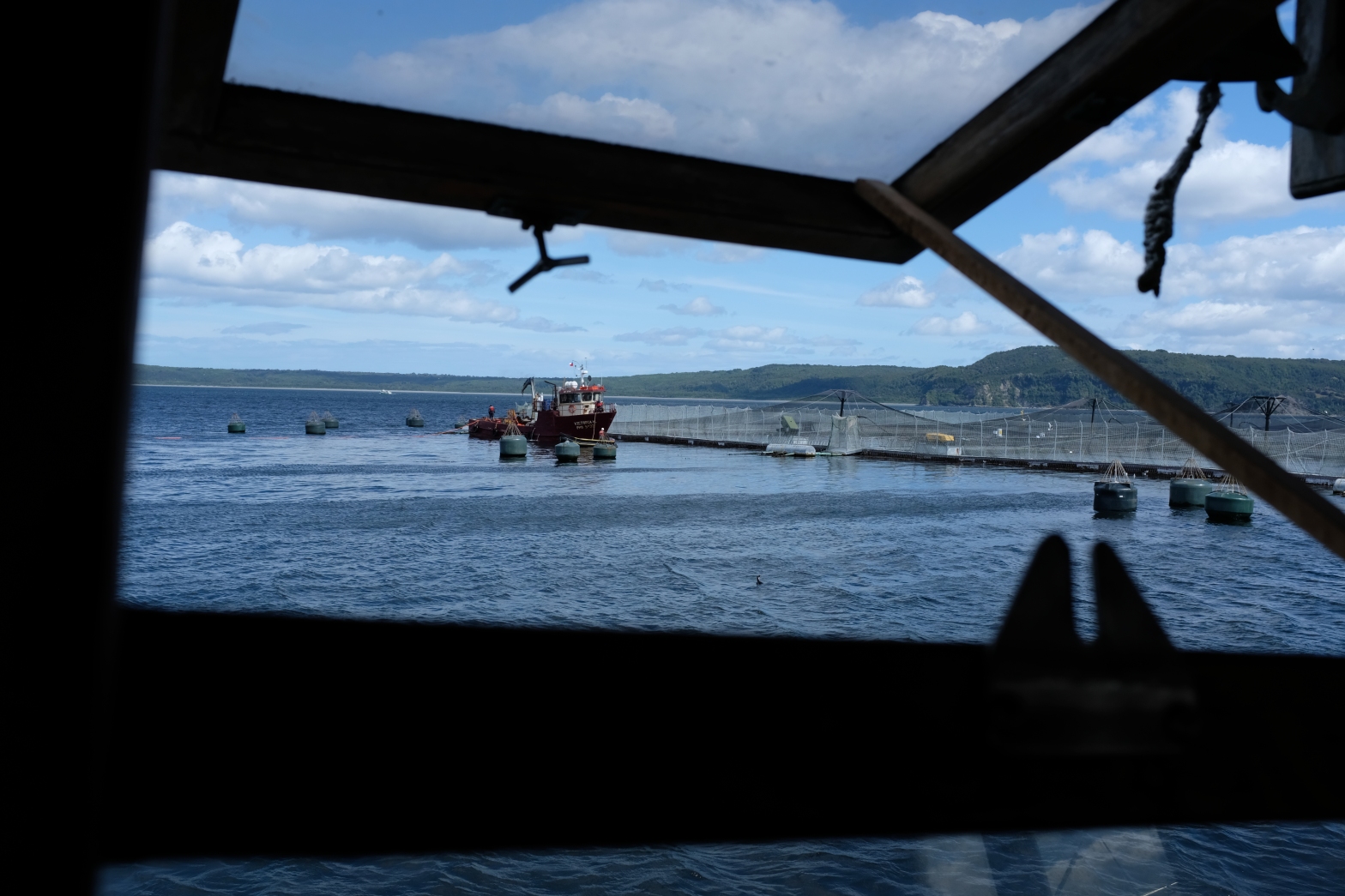This story was supported by the Pulitzer Center and republished by Mother Jones as part of the Climate Desk collaboration
Comau Fjord is a sliver of sea framed by thickly forested mountain slopes. Melting glaciers peek between the crags. Waterfalls tumble down mountainsides, faint lines across vast expanses of gray rock. It is quintessential Chilean Patagonia, but in the austral summer of 2021, the narrow fjord filled with the smell of putrefying fish.
The salmon farms that populate the remote glacial fjord were in crisis. A massive algal bloom was suffocating salmon in their pens.
Boris Hernandez, a third-generation resident who lives in a house at the edge of the fjord, went out on the water for a closer look. He saw a boat sucking dead fish from one of the salmon farms and spewing pink liquid—a mix of seawater, liquified salmon remains, and algae—out the boat’s other side.
Hernandez contacted Thomas Montt, who had recently visited Comau Fjord and expressed concern about the proliferation of salmon farming operations in the area. A few days later, Montt came by boat with a photographer to document masses of dead salmon rotting in nets on the water.
“It was the biggest organic spill I had ever seen,” Montt recalled. “It’s something you can’t imagine. It’s hard to visualize the amount of organic garbage that was floating on the water and everywhere. It would go into the bathroom of the boat, it would go in the cooling system, it would go on your hands. Everything was oily, fishy, messy.”
That was early 2021. By April of that year, just one salmon company, Camanchaca, had lost 1.3 million fish—approximately 2,500 tons. By the end of the month, total losses in the fjord had reached 6,000 tons.
As bad as that sounds, it pales in comparison to 2016, when a red tide of algae killed approximately 27 million salmon in Chile, a staggering loss of more than 110,000 tons of fish. More salmon died in two weeks than would be expected to die in two years of normal production. Jose Miguel Burgos, the then-head of Sernapesca, the governmental office that oversees fishing and aquaculture, said the dead salmon could easily fill 14 Olympic-size swimming pools.
